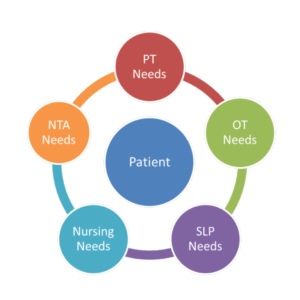SNF surveys: Do they tell the whole story?
A new report announced Friday by the Coalition for Quality Care (CQC) is bringing questions to light on how nursing home surveys are conducted. The 2013 “Stakeholder Perspectives on Nursing Home Survey Effectiveness” report asks residents and their families for their perceptions of the way nursing home surveys are conducted and the effectiveness of the survey parameters.
The report was prompted in part by the Centers for Medicare & Medicaid Services (CMS) ongoing initiative to revamp the nursing home survey process, which is carried out primarily by state agencies.
The CQC sought feedback from its organizational member groups, which include the Long Term Care Community Coalition, Voices for Quality Care and the California Advocates for Nursing Home Reform. Fifty-one consumer representatives and long-term care groups provided responses, and some of the data serve as red flags that merit deeper exploration.
The nursing home survey process, of course, relies on the idea that the surveyor will see the facility amid its normal, daily routines. Yet interesting comments surfaced when respondents were asked if they thought facilities were aware of when a survey would occur. Fully 75 percent of respondents replied “usually” or “always.” When asked why, the report summarized the respondents’ views as, “usually surveyors seem to come to different facilities in a particular order, so facilities talk with each other when they arrive.”
Other red-flag comments involved questions about how seriously problems were rated during the facility survey process. More than 65 percent of respondents said they felt the problems at their facilities were rated too low in both scope and severity. Between 20–35 percent felt the rating was accurate, while less than 5 percent deemed the ratings too high.
It’s no surprise that respondents felt the most valuable source of information on a nursing home survey was the residents themselves. What is surprising is that every other information-gathering technique listed—including payroll data, family council logs and medical records—was ranked higher than interviews with staff.
The most valuable portion of the report may be the open-ended questions on what should be done to improve the survey process. Many respondents suggested more detailed interviews with families and deeper scrutiny of medical records. Others had important suggestions about the survey environment, recommending that survey teams visit during shift changes and “during the busy times like meals [and] bed time,” and to conduct interviews in private spaces rather than common-access spaces.
But the top two recommendations—which should send a clear message to CMS—were to eliminate ways for facilities to predict or know a survey team is coming and to “take family complaints seriously.” Or, as the report quotes: “Get the picture while it is happening, not months later.”
The report is available online on the CQC’s website.

Pamela Tabar was editor-in-chief of I Advance Senior Care from 2013-2018. She has worked as a writer and editor for healthcare business media since 1998, including as News Editor of Healthcare Informatics. She has a master’s degree in journalism from Kent State University and a master’s degree in English from the University of York, England.
Related Articles
Topics: Accountable Care Organizations (ACOs) , Advocacy , Executive Leadership , Medicare/Medicaid , Regulatory Compliance










